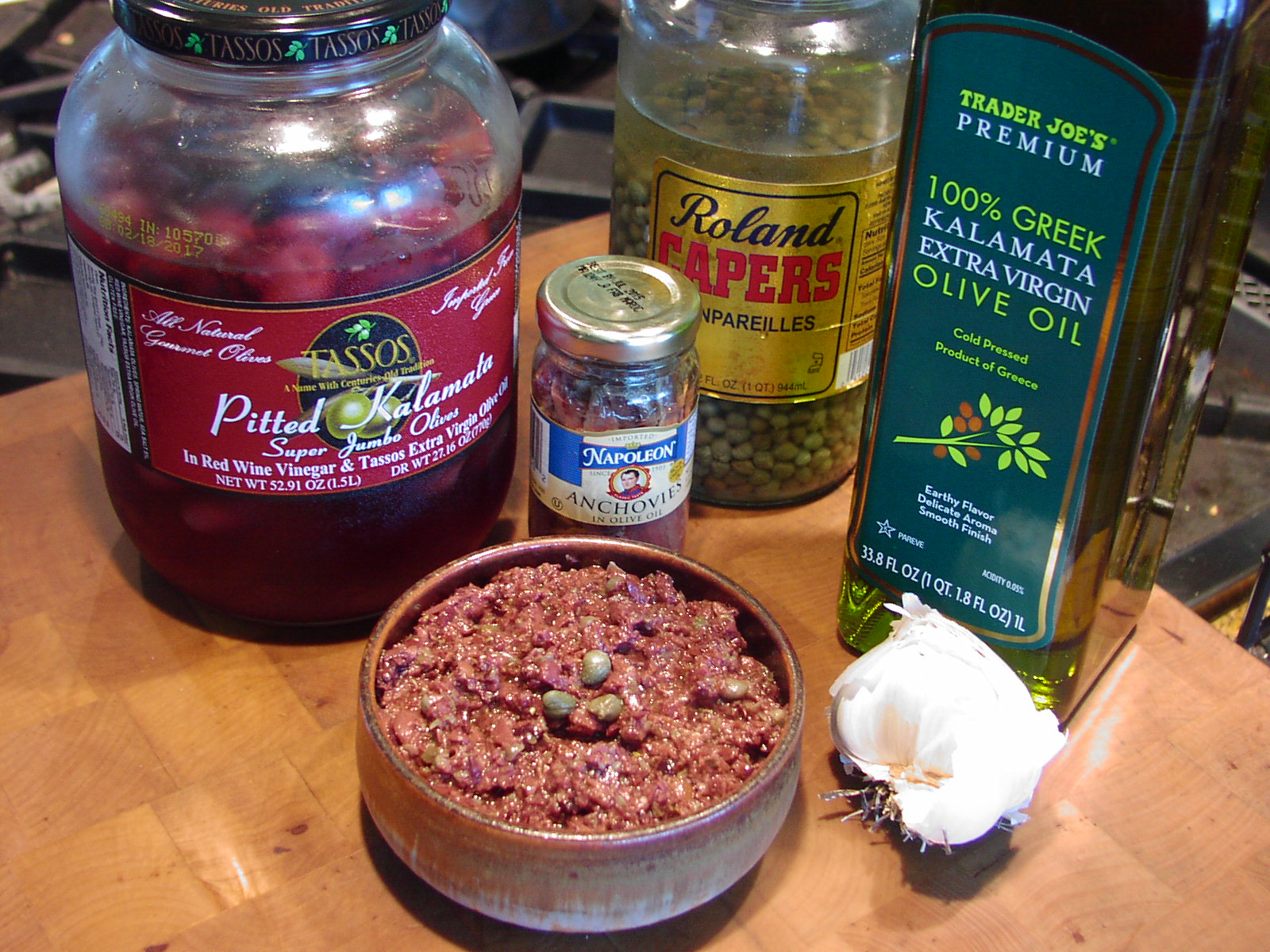Tapenade is a spread consisting of very finely chopped olives, anchovies, and capers in olive oil. The name “tapenade” comes from the Provençal word for capers, tapenas. It is a very popular dish in the south of France and is most often eaten as an hors d’œuvre, spread on toasted crusty bread or baguette slices.
I first started making tapenade when I was in my early forties because it was easy to prepare and totally different from anything else I served. (And no, I have no idea where I learned about tapenade. The recipe wasn’t in my Betty Crocker cookbook, that’s for darn sure!) I just knew that it was delicious and everyone who tried it loved it! I also had no idea until I began researching for this post that some form of this amazing spread had been around since before the time of Christ.
According to Clifford A. Wright, award winning writer on all foods Italian and Mediterranean, “although capers are native to the Mediterranean, it is likely they were brought to Provence from Crete by the Phocaeans, Greeks from Asia Minor, who settled near Marseilles in the sixth century B.C. The caper plant was known as tapeneï in Provençal, and the flower bud, the part of the caper used for culinary purposes, was the tapeno, which were preserved in amphora (ancient vessels used for storage) filled with olive oil since vinegar was not used at that time. The capers became mushed together in the amphoras to form a kind of pâté of crushed tapeno, the ancestor of the modern tapenade. This is why it is today known by the word for caper rather than olives, which is actually, in volume, the greater constituent ingredient.”
So next time you want an absolutely delicious and different topping to serve with toast as an appetizer, get out your food processor and whip, or should I say pulse up a batch. And you are right! There are lovely little jars of this concoction in the fancy food deli section of almost every grocery store. But just for grins, look at the price before you just plop a jar in your cart. (You might want to have someone with you to help break the fall if you begin to faint.) Then consider how much it would cost to make your own. (And again, I know. Not everyone has capers, kalamata olives, and anchovies just lying around.) But they should! All three of these ingredients are wonderful in all kinds of dishes. Just do a Google search on any of these items and see what amazing new culinary delights are out there for you to try.
Now, for your final French history lesson today: According to Smithsonian Magazine, historians are now convinced that Marie Antoinette never said “let them eat cake”. That darling little statement was attributed to Maria Theresa, the Spanish princess who married Louis XIV more than a century before Marie Antoinette ever set foot in France. (And you thought you were only going to learn about food on my blog. Surprise!)
- ¼ c. extra virgin olive oil
- 6-8 anchovy fillets
- 2 garlic cloves, roughly chopped
- ½ tsp. dried rosemary
- ½ tsp. dried oregano
- freshly ground black pepper
- 1½ c. pitted kalamata olives
- 3 T. capers, washed and drained
Combine olive oil, anchovy fillets, garlic, rosemary, oregano, and pepper in a blender or food processor. Process until thoroughly pulverized. Add olives and capers and pulse until they are coarsely ground. (Do not over process. You do not want a paste.) Serve with toasted baguette slices.

